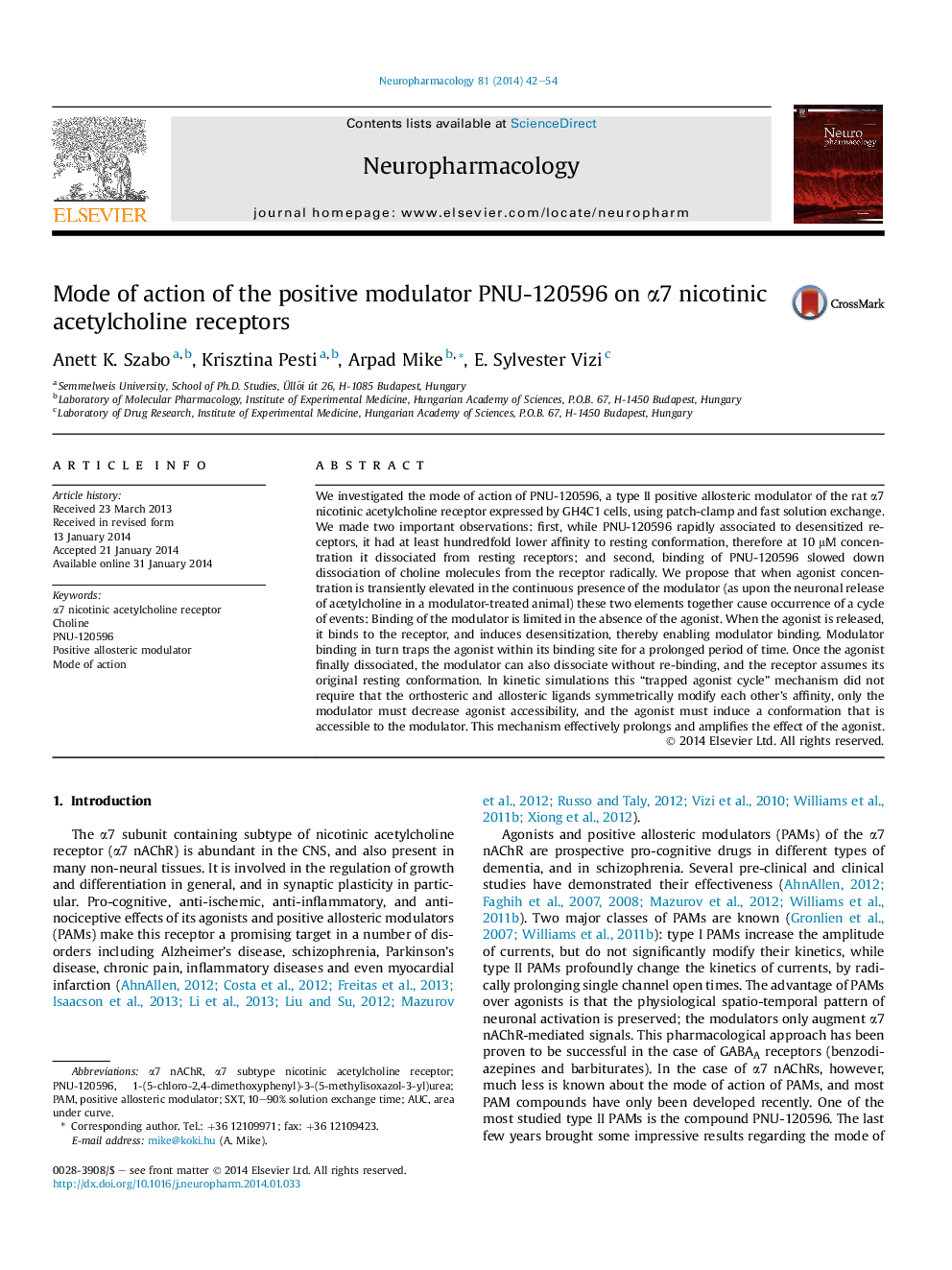| کد مقاله | کد نشریه | سال انتشار | مقاله انگلیسی | نسخه تمام متن |
|---|---|---|---|---|
| 2493230 | 1556633 | 2014 | 13 صفحه PDF | دانلود رایگان |

• Patch-clamp study of the type II positive modulator PNU-120596 on α7 nAChRs.
• Low affinity of PNU-120596 to resting conformation.
• PNU-120596-insensitive slow-desensitized conformation of the receptor.
• Hindered agonist dissociation in the presence of PNU-120596.
• The “trapped agonist cycle” mechanism is proposed for agonist–modulator interaction.
We investigated the mode of action of PNU-120596, a type II positive allosteric modulator of the rat α7 nicotinic acetylcholine receptor expressed by GH4C1 cells, using patch-clamp and fast solution exchange. We made two important observations: first, while PNU-120596 rapidly associated to desensitized receptors, it had at least hundredfold lower affinity to resting conformation, therefore at 10 μM concentration it dissociated from resting receptors; and second, binding of PNU-120596 slowed down dissociation of choline molecules from the receptor radically. We propose that when agonist concentration is transiently elevated in the continuous presence of the modulator (as upon the neuronal release of acetylcholine in a modulator-treated animal) these two elements together cause occurrence of a cycle of events: Binding of the modulator is limited in the absence of the agonist. When the agonist is released, it binds to the receptor, and induces desensitization, thereby enabling modulator binding. Modulator binding in turn traps the agonist within its binding site for a prolonged period of time. Once the agonist finally dissociated, the modulator can also dissociate without re-binding, and the receptor assumes its original resting conformation. In kinetic simulations this “trapped agonist cycle” mechanism did not require that the orthosteric and allosteric ligands symmetrically modify each other's affinity, only the modulator must decrease agonist accessibility, and the agonist must induce a conformation that is accessible to the modulator. This mechanism effectively prolongs and amplifies the effect of the agonist.
Journal: Neuropharmacology - Volume 81, June 2014, Pages 42–54